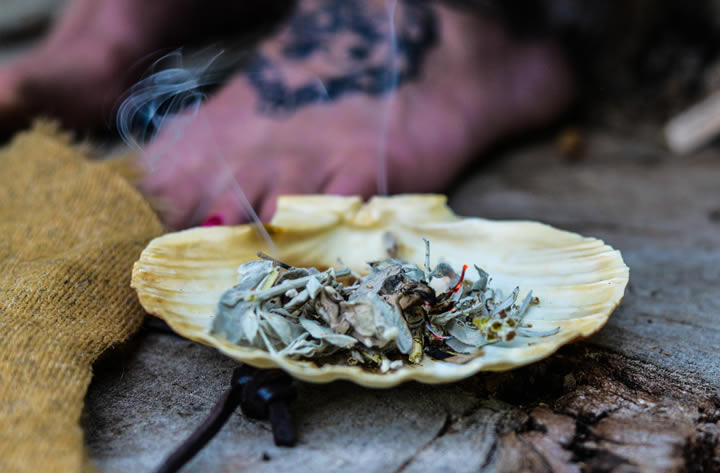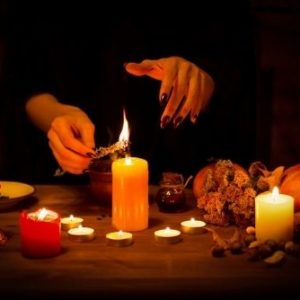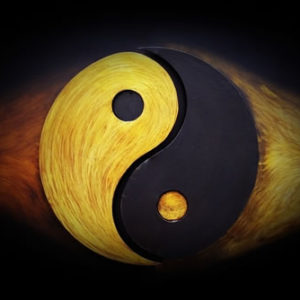
While most practitioners will prefer the name Regla de Ocha or the Lucumi religion, Santeria seems to be the most common name used. The word ‘Santeria’ does refer to the practice of devotion to saints in Spanish, this is not the most accurate term for the current worship of most practitioners – or, at least, the modern word is too narrow to hold all of the practices of this tradition.
What is Santeria, Origins and Brief History
Rooted in the practices of the Yoruba people in West Africa, Santeria was brought to many areas of the world because of the slave trade. And while many of the Africans who were sent to the United States, Cuba, Brazil, Haiti, Puerto Rico, and Trinidad converted to Christianity, they were still able to carry some of their traditional beliefs through the practice of Santeria. What you will want to remember and realize is that the practice of Santeria is not just a mixing of Christianity and older practices. What resulted in Santeria was more of a parallel practice of Christianity and older beliefs. In doing so, followers have been able to practice in Catholic churches, attend mass, and follow those holidays, while still using Santeria practices at home.
Many followers of Santeria do not see a problem in blending these two routes of worship. But what is clear is that the saints, orishas, and ochas are not the same things. These are all different entities depending on how they are worked with and how they are represented in the practices of an individual and where they are located.
It’s important to point out that Santeria is not a primitive or simple religion. Instead, this is a practice that is rooted in an old culture, one that remains today. In addition, Santeria is a practice that believes in a god and that sees Olorun/Olodumare as the source of all spiritual energy (ashe). The god is not someone or something that followers can interact with directly. Instead, there are go-betweens that will act on the behalf of the followers and on the behalf of Olorun.
The ones who go between the god and the followers are called orishas. These particular beings will be able to interact directly with humans and can influence everyday life. They are also able to be approached by followers and would-be followers, and they are readily available.
Santeria as a Religion
When you think about a religion, it’s easy to think of a practice that has one sacred text or one set of beliefs to which everyone adheres. This is not the case with Santeria. Instead, this is a religion that is influenced by how a practitioner decides to practice. In addition, a follower of Santeria might also be influenced by how their family practices the religion – and this can look different than their friend or neighbor’s worship.
Mostly an oral tradition, the beliefs, and systems of the religion have been scattered from one place to another, serving more as a reference of how to act and to practice, versus a rigid system of rules. There are certainly some secret practices that are only bestowed to those who have been training for a long period of time, but most of the teachings are readily available to anyone who is willing to listen and learn. In fact, the overall message of Santeria is that people should live in the right relationship with the orishas in order to gain more ashe in the world. By living in integrity and by improving their overall selves, one can continue to gain power and enjoy a happier life.
Olorun is the god who encourages integrity and morality by passing these messages onto the orishas to communicate to followers. At one time or another, the orishas were once human too, so they are the right ones to interact with the humans in the present reality. At some point in your life, when practicing Santeria, you might find out which orisha has your head, or who is called to help you in this life. Once you know this relationship, you can do things to cultivate it and then you will learn how to be in the right relationship.
Even in that relationship with a specific orisha, Olurun is still the supreme god that presides over all others.
Divine Correlations – Santeria and Christianity
According to some estimates, there are up to 100 million practitioners of Santeria in the world, and this number is growing as more people learn about the religion. While once a practice in Africa, Santeria is now spreading to urban and suburban settings, across socio-economic settings and even across races.
For those that are new to Santeria, it can help to compare the Yoruba practices and words to phrases and beliefs found in Christianity.
- God = Olurun/Olodumare
- Jesus = Olofi
- The saints = Orishas
- The dead = Eguns
While these are not direct correlations or intended comparisons, many people find it easier to understand the practice of Santeria when they have a context of comparison.
You can also look to the orishas and compare them to saints in the Christian tradition. There is a debate about how these relations came to be, whether they were created before or after the practice of Santeria spread in the world.
- Christ = Olofi
- Lazarus = Babalu Aye
- Barbara = Chango
- Holy Child = Eleggua / Elegba
- Virgin of Mercy = Obbatala / Obatala
- Virgin of Caridad del Cobre = Ochun / Oshun
- Peter = Oggun
- Francis of Assisi = Orula
- Virgin de la Candelaria = Oya
- Virgin of Regla = Yemaya
If you are familiar with these saints or you already have a special relationship with one or more, this might be a sign you need to pursue a closer relationship with them in your spiritual practice.
Introduction to Orishas
Currently, the idea of orishas is more widely recognized, though not as well understood. As the go-betweens for the god and the humans, the orishas are able to hold the energy of the god and share that with the follower. If you are a follower, what you do is contact the orishas to send questions or petitions to the god, but you do not talk to the god directly. And the orisha will come back to you with any responses or challenges.
While there are a number of orishas one might choose to worship or petition, the most commonly followed ones include:
Elegba
As the first orisha in Santeria, this is the most important orisha to know, according to some. This is the one who watches over the crossroads and oversees the movement of fate. They are often known as a trickster who can be wild and unpredictable.
Ogun
As the divine blacksmith and a warrior, Ogun is the one that you might call on when you need power and weapons to aid in your life.
Babalu Aye
This healing orisha is the one that is followed by many practitioners of Santeria. They are the one that will help those who have medical issues, including those with HIV/AIDS.
Obatala
As the one in white, Obatala is the lady of mercy. They are androgynous and seen as the keeper of peace and logic.
Oya
This female warrior is the orisha of change, the one who owns the cemetery gates and who lives in the marketplace.
Oshun
The orisha of love, beauty, and water is the one who is strong and motherly but will quickly fight those who wrong her.
Chango
This is the orisha of thunder and lightning, the one who owns the drums and who inspires passion and energy. Read more…
Yemaya
An orisha of the waters, Yemaya oversees all living things and is a fierce, motherly protector of beings.
But even these short descriptions do not encompass what you can learn by working with these orishas on a personal, one-on-one basis. Just like any relationship, you need to find ways to get to know them, bring them presents, and cultivate mutual trust.
Ancestors
While there is a god and orishas in Santeria, there are other beings that are also helpful in living a moral life: the ancestors. When you are born, you are born into a lineage of family, one that might be complex or hard to understand. In Santeria, you will find that there are ways to look at your ancestors, celebrate them, and find ways to make peace with them.
First, there are the Egun, who are the blood or religious lineage ancestors. These are the ones who have played an important part in your growth and development. They are also the ones who you will make offerings and tributes to, and they are the ones we call upon first as they gave birth to the orishas.
Though you might set up an altar to the orishas or other beings, you will want to set an altar to the ancestors on the floor, near a wall. You can also set up different drinks and chalk drawings there to help with summoning on their wisdom and presence.
There are also sprits you can call on, those who are not a part of your ancestry: c or Ara Onu. The Araorun are akin to guardian angels or spirit guides. You can call on these unseen, often unknown forces, to help you in your rites and in your everyday life. While these were not a part of the original practices of Santeria, the non-ancestral spirits can help with contacting spirits and sending love to ancestors or those who might be crossing over from the earth to the spirit world.
Rituals and Ebos
What keeps many people away from Santeria is the idea of sacrifices, but there is a lot of misinformation being shared. Instead, you might want to think about ritual offerings (Ebo) as the practice of giving so that one might be revered or celebrated. There are a number of ways to use the tool of Ebo, and it can impact the fate and the state of our happiness.
You might use Ebo as an offering, or as an initiation, or as a bath, or as the receiving of an orisha. Some of the most used Ebo are:
Addimu – cooked offerings
Isogui – fruit offerings
Eyebale – blood sacrifice
Ritual baths
Remember that offerings are ways that we can give thanks to the orishas or the ancestors. You might offer something that you cooked and give some to the altar where your orisha(s) or ancestors are celebrated. It is best to find out what your particular orisha likes, as that will be more pleasing to them. And you can use recipes of your ancestors to help them see your connection and feel your love. You can do prayers of offerings and thanks along with the ritual offering.
Others like to give fresh fruits to the orishas as they are favorites of many of these guides. It is ideal to give offerings that are marked through divination first, but you can also give offerings that are inspired by the heart. And if you are invited to any celebrations, it might be wise to ask if there are any specific fruits or offerings which are better to bring.
While blood sacrifices are rare, there are Ebos that require this to be done. You might use a chicken, goat, or other farm animal as part of initiations, for example. The orishas will request that blood be spilled in order for them to arrive. The sacrifice is done with respect to the animal and with the minimal amount of distress – and only when necessary. Most often, the meat of the animal will then be cooked and fed to the ones who participated in the ritual, in gratitude for the sacrifice and a celebration of the animals’ life.
You can also do specific ritual baths as offerings to orishas and ancestors. You might want to soak in herbs and oils that are specific to the orisha and then do the bath on the day of the week that is closely related to them.
Other rituals include priests being possessed by the spirits and ecstatic drumming to raise energy and to build communion with the orishas and Olurun.
4 Comments
Leave a Reply
You must be logged in to post a comment.










I am in the beginning stages of becoming a Santero. This is a very helpful article.
Do I have to learn the Lucumi language to practice santeria?
No, you don’t have to learn the Lucumi language. It’s not a requirement to practice Santeria.
I love your website and especially your articles. Please keep them coming 👍